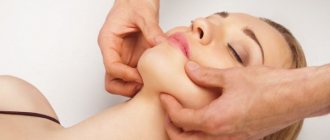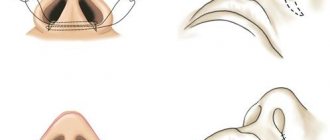Many people see some flaws in their appearance, for example, a long nose. Of course, this is not a flaw, but a feature that does not need to be fixed. Moreover, you shouldn’t be ashamed of her. However, nothing prevents you from slightly adjusting your appearance without resorting to the help of plastic surgeons. Accessories, including glasses, will help with this.
In this article
- How to choose the right glasses?
- How to choose the right glasses for your face shape?
- How to choose the right glasses for your eyebrow shape?
- Types of eyebrows and glasses
- What glasses to choose if you have a long nose?
- Wide nose and glasses
- Long nose and glasses
- Asian nose and glasses
According to the latest sociological research, 98% of Russian women do not think that they are beautiful. Moreover, 72% of the girls surveyed are so dissatisfied with their own appearance that they experience mental suffering over it. 40% do not consider themselves attractive, and 23% are afraid that they will never get married. Therefore, we are ready to constantly experiment, changing our body, style, etc.
Even without surveys, we can say that many girls often find some shortcomings in themselves that actually do not exist. We are not talking about excess weight, “big nose”, “narrow chin”, “small lips”, etc. Obesity is indeed a problem, not only cosmetic, but also medical, as it causes the development of various dangerous diseases. As for the big nose, this, of course, cannot be called a flaw. This is a feature of appearance that makes a person more unique. Not all people can be philosophical about this. Girls go to clinics to see plastic surgeons and radically change their appearance. At the same time, some subsequently cannot stop and continue to correct their “numerous shortcomings.”
But such “problems” can be solved without the help of surgery. Any stylist will tell you that you can correct your appearance without radical methods. It is enough to purchase the appropriate accessories, create a new image or change your hairstyle. Let's learn how to choose the right glasses to make a large nose less noticeable.
How to choose the right glasses?
To choose glasses, you need to consider several factors:
- type or shape of face;
- individual features of appearance - large nose, wide eyebrows, deep eyes, etc.;
- skin and hair color;
- general clothing style;
- an indicator of visual acuity in the presence of a refractive error.
We’ll talk about what glasses are suitable for girls and men with big noses later. First, we will describe the rules for selecting optical products according to the shape of the face. This parameter is one of the most important from the point of view of aesthetic perception.
Plastic surgeon Amina Kibisheva: “Nothing changes the expression and harmony of the face like the shape of the nose”
Of all the options for plastic surgery on the face, rhinoplasty stands out. She can rightfully be called the queen of aesthetic surgery, because it is a well-groomed profile and a clear full face that can ennoble a person’s appearance and improve the perception of a person by others.
Leading specialist at the LuxCLINIC plastic surgery and cosmetology clinic, Candidate of Medical Sciences Amina Kibisheva spoke about this interesting operation, as well as about other popular areas of facial plastic surgery:
Amina, why does rhinoplasty occupy such an honorable place in plastic surgery?
– Nothing changes the expression and harmony of the face more than the shape of the nose. Depending on it, a person’s perception is formed and, to some extent, the patient’s character is reflected. Rhinoplasty is one of the most complex aesthetic operations and the problem lies in the fact that the doctor, even in the preoperative period, must have a clear understanding of what changes will be made during the operation, taking into account the wishes of the patient, the initial state of the tissues of the intended correction area and the doctor’s experience.
Any slightest inaccuracy, unnecessary removal of cartilage or bone structures will later manifest itself and become noticeable, leading to deformation of the nose, sometimes ending in dissatisfaction and possibly suffering for the patients. It is necessary to preserve the anatomical proportions of the nose as much as possible during the operation.
Some plastic surgeries are performed generally technically the same for all patients, but rhinoplasty is difficult in planning intraoperative manipulations and understanding what the nose will look like after correction. Its results largely depend on the type, thickness, structure of the skin, the number of sebaceous glands and the severity of subcutaneous fat.
What types of rhinoplasty exist and how do they differ from each other?
– There are reconstructive and aesthetic rhinoplasty. Aesthetic rhinoplasty allows you to shape the nose and ensure that its proportions are balanced with facial features with normal, unchanged tissues. Reconstructive rhinoplasty is the restoration of the proportions of the nose in the presence of defects and deformations of various origins.
In aesthetic surgery, we have to deal more with congenital deformities, such as saddle nose (recession in the bone and/or cartilaginous parts), long nose, humpbacked nose and tip deformities.
Can the patient's character change after changing the shape of the nose?
- Partly yes. For many people, a more attractive appearance gives them confidence. For example, a small upturned nose will give a person more tenderness, charm and flirtatiousness than a straight and sharp nose, more suitable for a business woman. If you make a snub nose for a strict academic girl, it may not be in harmony with her inner state.
You also need to take into account the national and ethnic features of appearance - there are several types of noses (oriental, characteristic of the peoples of Asia, Caucasian, Negroid and European), each of which requires an individual approach.
Can secondary rhinoplasty occur in the life of every surgeon?
– Yes, and revision rhinoplasty is technically even more complex than primary nose correction, because There are already surgical changes in the osteochondral pyramid and skin reduction, subcutaneous scarring, especially after aggressive surgical interventions. In this case, aesthetic rhinoplasty turns into reconstructive, and the doctor corrects, recreates the tissue, and possibly eliminates mistakes made at the previous stage.
Also, a frequent reason for revision rhinoplasty may be the patient’s inadequate perception of his new image. Some patients have internal psychological problems. The operation itself can improve their inner sense of self, or it can leave the patient dissatisfied.
Is it possible to give a patient the nose of his dreams?
– It is necessary to very accurately distinguish between surgical possibilities and the wishes of patients. Often, even the patient himself does not know which nose shape to choose. The main thing is to operate in such a way that the wishes are taken into account, but at the same time harmony in appearance is achieved. To do this, you need to take into account the proportions of the upper, middle and lower areas of the face. The face has its own anthropometric proportions and relationships.
Each patient must be approached individually. Knowledge of facial anthropometry can facilitate correct assessment of the size of a defect or deformity, as well as planning a restoration technique.
Is it possible to say that “open” and “closed” rhinoplasty are two autonomous directions that do not compete with each other?
– Open and closed rhinoplasty today are performed equally successfully and each has its own advantages. Open rhinoplasty involves an incision on the skin of the nasal septum and with this access the doctor sees all the structures of the nose in their natural anatomical position without stretching or displacing tissue, which facilitates all stages of the operation, expands technical capabilities, and makes it easier to place and fix grafts. To prevent the effect of skin retraction and deformation on the skin part of the nasal septum after such an operation, the doctor uses a shaped incision in its narrowest part.
Also, only open rhinoplasty should be used in most cases of secondary rhinoplasty, nasal asymmetries, congenital pathology, when reconstructive surgery is performed. It is better for a novice surgeon to give preference to open access for better tissue visualization. Closed rhinoplasty can only be performed by an experienced surgeon. But patients, of course, are more attracted to closed access, which avoids external scars.
Are there other options for nose work other than aesthetic and reconstructive rhinoplasty?
– Yes, often aesthetic rhinoplasty becomes functional, i.e. associated with the restoration of breathing. To restore breathing, a deviated nasal septum is corrected, both its cartilaginous and bone parts - rhinoseptoplasty. The operation can combine vasotomy with conchotomy, correcting the condition of the nasal turbinates, thereby increasing the lumen of the nasal passages.
What materials are preferable when there is a deficiency of nasal tissue?
– The ideal material is the patient’s own tissue. First of all, this is septal cartilage, which is more resistant to resorption, ear or costal cartilage, and cadaveric cartilage is also widely used. There is a wide variety of implants used for the same purposes, but the use of autografts minimizes the risk of tissue resorption, rejection and inflammation.
Blepharoplasty is one of the three most popular operations after mammoplasty and liposuction. What are the indications for this type of surgery?
– Nothing makes your appearance look younger like eyes – and overhanging folds can give your face a tired and senile look. As soon as the eyelids are operated on, the person looks much younger, even if circular correction of atrophy of the tissues of the face and neck was not carried out. It is not recommended to do aesthetic blepharoplasty more than two, maximum three times.
Often after surgery, the effect of sunken eyes appears. What is the surgeon's mistake?
– This is a negative effect obtained due to excessive removal of fat bags in hernias of both the upper and lower eyelids. If an inexperienced physician excessively removes orbital fat, a sunken-eye effect may occur, so minimal interference with the orbital fat on the eyelids should be done.
Radical intervention on the orbital tissue not only aesthetically worsens the external effect, but can lead to problems with the organ of vision. The effect on the eyelids requires delicate handling of tissues. Blepharoplasty on the lower eyelids, in some cases, is performed not with resection, but with redistribution of fat in the area of the nasolacrimal groove.
How to avoid the effect of “operated eyelids”?
– In the pathogenesis of age-related changes in the eyelids, all eyelid tissues are involved, including not only overstretched skin, but also atrophic changes in the orbicularis oculi muscle and adjacent structures, leading to its distensibility, sagging, and decreased tone. There are several surgical treatment methods. There are many conflicting opinions regarding the integrity of the orbicularis oculi muscle of the lower eyelid during surgery - whether to resect a fragment of the muscle or not.
Supporters of muscle preservation see a solution to the problem of “operated eyelids” in removing hernial protrusions through a transconjunctival approach, leaving the orbicularis muscle intact. There is another point of view: the need to resect a fragment of a muscle that is overstretched during age-related changes. To prevent eyelid retraction and rounding of the outer corner of the eye, there are surgical techniques such as myopexy and canthoplasty (suspending the muscle and external ligament of the eye to the periosteum of the orbit). And, of course, minimal skin excision, thus preventing the lag of the lower ciliary edge of the eyelid from the eyeball and eversion of the eyelid.
Whatever technique the doctor knows, the most important thing is preoperative planning, assessment of the condition of tissues, knowledge of anatomy, surgical treatment methods, and a careful, non-aggressive attitude towards tissues.
Where is the suture from the operation and what threads are it formed with?
– The incision on the lower eyelids is made as close to the eyelash line as possible. On the upper eyelids, incisions are made so that the scar is 4-10 mm from the upper ciliary edge, repeating the curve of the natural palpebral fold, which is absent in the Mongoloid eyelid structure. A suture is placed on the skin with a thin non-absorbable thread, which is removed 3-4 days after surgery. In the postoperative period, a complex of rehabilitation measures is possible, aimed at the rapid restoration of lymph and blood circulation.
It is believed that otoplasty is one of the easiest operations, but is it true? What difficulties exist in this direction?
– This is not an easy operation at all. Otoplasty is a large independent direction in aesthetic surgery. The complex topography of the auricle requires recreating the same auricle as nature created it. The etiology of defects and deformations is different.
The most common aesthetic operation is the correction of congenital protruding ears, which can be performed from 5-6 years of age. At this age, the auricle completes its growth. Congenital deformities can be very serious, including the absence of the auricle or underdevelopment of its elements, in combination with a malformation of the inner ear. Reconstruction of the auricle in case of traumatic injuries is no less difficult. Such operations are carried out in several stages and require patience from the patient, psychological assistance, extensive experience, knowledge and skills from the doctor.
How does a plastic surgeon become a professional?
– The path is long and thorny. Becoming a highly qualified specialist is very hard work, requiring great physical effort, great dedication, perseverance, and patience. Experience in general and maxillofacial surgery, microsurgery and craniofacial surgery, ophthalmology, otolaryngology and other related specialties is required, study of professional literature, participation in Russian and international congresses and conferences, where a plastic surgeon can replenish his professional knowledge base, learn from the experience of leading Russian and foreign specialists. A doctor who takes this path should not count on quick and easy success. Plastic surgery is the highest level of professional skill.
How to choose the right glasses for your face shape?
Ideally, of course, it is better to contact a stylist. It will help you choose the right glasses, but also other accessories. However, not everyone has this opportunity, so we will give some simple tips regarding the selection of frames based on your face type. There are 7 of them in total: round, heart-shaped, diamond-shaped, oval, rectangular, square and triangular (pear-shaped). Let's consider the features of each separately.
A person with a round face has a low forehead and plump cheeks. The chin does not protrude forward. The cheekbone line is quite wide. Using the frame, you can slightly reduce the roundness if you choose a rectangular or trapezoidal model. Under no circumstances should you wear round, square or oval glasses. They make the face even smaller.
People with a square shape have angular facial features and a wide forehead. The frame should visually soften the angularity and sharpness of the cheekbones. Glasses with rounded edges, including cat eyes, are suitable for this. Square and rectangular models should be abandoned because they increase angularity.
People with an oval face are suitable for glasses of any design, except for oversized frames, which are massive. The cheekbones of this type of face are not wide, the chin is quite narrow. There is no need to soften corners or disguise roundness. The features of an oval face are the most proportional.
If your face is rectangular and elongated vertically, horizontal frames are suitable. It is better to choose glasses with smooth lines. Quadrangular ones will look unaesthetic. Round-shaped models should be chosen in medium or large sizes. Small frames of the same shape will not work.
Round glasses are suitable if you have a heart-shaped face shape with sharp cheekbones and chin. You can also choose aviators that will remove the emphasis from the upper part of the face. Rectangular frames only make a wide forehead heavier.
People with a triangular face have a well-defined chin and a narrow forehead. What glasses to choose in this case? It is recommended to choose frames that focus attention on the eyebrows. Models with upturned corners will look very elegant. But it is better to avoid glasses with sharp corners, including rectangular ones.
There is also a face type called diamond-shaped. He is characterized by a pointed chin, wide cheekbones and a massive forehead. What kind of glasses should I choose to achieve proportionality in my features? Stylists advise purchasing aviators and oversized frames.
Round models should be avoided.
These rules will help you choose sunglasses and optical products for vision correction. In the first case, you are more free to choose. When choosing optics to correct refractive errors, you need to take into account not only the shape of your face, but also your vision. Large prescription glasses are rare. But sun protection models can be either very small or in hypersize style.
Now let's look at such a part of the face as the eyebrows. This is also one of the important factors to consider when choosing frames. After that, we’ll tell you which glasses to choose if you have a large or long nose.
Plastic surgeons about the fashion for rhinoplasty
Today, the fashion for noses has reached its peak - in pursuit of aesthetic standards, not only unmarried fans of Victoria Lopyreva agree to go under the knife. Outstanding masters of hand-made beauty, the best surgeons in the city, tell us why the nose is everything and how to choose the right one for yourself.
Lyubov Safonova
A plastic surgeon at the SPIC Beauty Institute advises looking in the mirror less often.
How does the intention to become a plastic surgeon arise when, as a child, you sculpt new noses out of plasticine for dolls?
Well, it’s absolutely clear that I always had the desire to “do it beautifully.” The place where I started working was called the Clinic of Maxillofacial and Plastic Surgery at our medical university. In fact, it was a single specialty - in Soviet times, no independent aesthetic surgery existed. We did not decorate, but treated people. We worked with injuries and inflammations. However, I always tried to ensure that the operation did not leave traces, I thought about how to apply the stitches more carefully. So the embryo of an esthetician was still in me at that time. But then plastic surgery was a closed topic. It took a lot of effort to get any information.
That is, plastic surgery was not performed at all in the Land of the Soviets?
Why? Cleft lip or other defects were corrected, strictly certified by the textbook. Well, in radical cases, reconstructive surgery worked: since you don’t have a nose, we’ll make one from your ear, get a referral. However, there was a narrow, narrow gap into which healthy people could get through. True, only to a select few. It was called “cosmetic surgery.” In Moscow and Leningrad in the early 1980s, two Beauty Institutes appeared. In 1986, ours moved to Gorokhovaya and existed there until the end of his days. At one time I worked there too. It was a paid clinic, similar to dental clinics. For sixty rubles you could make eyelids. In seven - complete rejuvenation. Wonderful. But the queues there were such that it was better to plan rejuvenation from kindergarten. And they stood at the beginning of an endless chain, of course, through connections. So the main expenses on the path to beauty were spent on getting to the surgeon’s office, and not on the operation itself. By the way, some of the doctors at the Leningrad Institute of Beauty are still practicing. They just do everything, perhaps, a little old-fashioned. Not bad, but at the level of a rotary phone compared to an iPhone.
What progress has happened in plastic surgery in recent years?
We have made great progress in anatomy. It has been studied since ancient times, but over the past twenty years they have begun to look at this science differently. Previously, only through the prism of diseases, but now new mechanisms of aging have been discovered. People have recently stopped worrying about reaching fifty. Now they have calmed down and become interested in their appearance. Whether the patient will survive after plastic surgery is no longer a question. And now they are made not only by actors obsessed with their beauty and narcissists, but by everyone. It's like going to the hairdresser.
But what about the statement that you need to love yourself as you are?
Necessary. At least try it. Looking at my patients, I always try to understand whether the problem is imaginary or real. Of course, I will remove the obvious hump, no questions asked. But if a person says: “I can’t live with this nose,” I won’t help him. Because he won’t be able to live with another nose either. In general, I advise you to look less in the mirror. Constant contemplation of oneself leads to the birth of such monsters in the head...
So you can refuse a patient?
By itself. How can I operate without understanding the task? However, no matter what my colleagues say, they say, you can’t cure complexes with surgery, the overwhelming majority of my patients are satisfied with the changes made. The main thing is not to get carried away with trimming.
Is there a certain type of person who goes to plastic surgeons?
I will speak for my patients: they belong to a very specific category. As a rule, these are working women with a clear understanding of the problem and a sober view of themselves. They have very little time. And plastic surgery is not their main occupation - I think you know what I mean. Probably, I myself form a circle of such patients. If you respond to any stupid request during consultations with “we’ll do everything,” you can end up with a stream of ecstatic madmen. Nine pregnant women will not give birth in a month. And the cast can be removed only ten days after rhinoplasty - no other way has yet been found to come to an agreement with nature. In general, operating on people who are unable to look at things realistically, keep promises and control their post-operative behavior is the surest way to see tantrums on a daily basis. Invigorating, but not for everyone.
What is the most important thing in your profession?
Agility. To master a symphony, you need to play scales for ten years. The surgeon's experience is also determined by his experience and the flow of patients. In the meantime, there are no patients - sit in the morgue.
Is this a sentence?
This is the rule: all the “drafts” are there. The patient doesn't care what certifications you have. He wants a nose, a beautiful one, and not to tell everyone what a beautiful certificate the surgeon has. During surgery, I always rely on tactile sensations; they last longer than visual ones. If you look at the circle for a very long time, it will first turn into an oval, then into an egg, then into a sausage... The eye quickly blurs. You need to feel it with your hands.
How do you choose a “beautiful” nose for a patient? What are you focusing on?
On the tables of aesthetic standards, a common teaching aid for those involved in sculpture and drawing. It is ruled by precise calculation: it’s all about proportions. The same nose can “sit” differently on faces. I always come to the operating room with a ready-made plan. During the process, it is already difficult to evaluate something: gravity acts differently on the face, the muscles are relaxed from anesthesia... During the consultation, I make notes on how the person looks during small talk, then compare them with the photos taken in the clinic. One of my patients hid her nose so hard during a conversation that it seemed colossally long to me. And in the photo - within the norm. And this is what I will say: even if a person has a huge nose, but he doesn’t know about it - thank God. Anyone who tells him about this should be shot. There are free consultations where people ask: “Look, what can I fix?” No problem, you are beautiful! Since you live in comfort with your packaging, there is no point in sorting through it.
Is there a fashion for noses?
Certainly! Moreover, it changes every five years. For example, they used to ask for small doll noses, but now they ask for unisex noses. Decisive, with projection. In my opinion, this is a general trend towards smoothing the boundaries between the sexes. People who want to emphasize their femininity or masculinity with their clothes and behavior look somewhat old-school today. I always ask that you bring pictures to your consultation, because there are so many beauty options. Usually people enter the office with a photo of Sharon Stone or Angelina Jolie.
Has Jolie had rhinoplasty?
Yes, it's easy. She has an implant. Actually, the surgeon had no other options for the depressed bridge of the nose - he just had to choose a finished product from the package.
Is there anything you want to change about yourself?
I have very little time to spend on my appearance. In my care, I focus on all sorts of aggressive procedures with a long-lasting effect, in order to look as decent as possible with a minimum of cosmetics. In the operating room, for example, it is excluded: under hot lamps, all the makeup can flow in a stream and end up somewhere in the wrong place. I treat glaring age-related changes directly in our clinic. But she did noses and liposuctions for friends, and rejuvenation for older relatives. Luckily, I'm pretty cool-headed. And I believe that it is better to take on a difficult task yourself than to entrust it to someone else.
Denis Agapov
The plastic surgeon and chief physician of the Medici clinic believes that sculpting masterpieces is not as important as making a “predictable” average nose.
I have always liked oral and maxillofacial surgery. I completed clinical residency in the specialty “Otorhinolaryngology - head and neck surgery.” It is in this area that the question of plastic surgery has arisen especially often: the consequences of injuries on the face are too obvious. I stitched up wounded patients, I loved it. When I graduated from graduate school, I was invited as a consultant to the only Beauty Institute in the city on Gorokhovaya.
Plastic surgery is an all-in-one field of medicine: it allows you to operate on any part of the body, makes it possible to do reconstruction, and take care of age-related changes. Plus you work with healthy people, which is nice. But on the other hand, this imposes even greater responsibility. A healthy patient following plastic surgery will not be grateful just because he feels good. However, according to WHO definition, health is well-being in the physical, mental and emotional spheres. And if someone is dissatisfied with their appearance, it means that there is some kind of disturbance in the emotional sphere. And it turns out that it cannot be done without treatment.
The most difficult thing in rhinoplasty is to get the perfect result not on the operating table (it will be far from final), but in the end of the transformation. After a few months, the scars will shrink and all the swelling will go away - only then will the patient become familiar with his new nose. But a surgeon needs to be clairvoyant. I mean, without any hindrance, imagine what will happen to the nose he made six months later.
Our main task is not to sculpt masterpieces, but to give predictable average results. For the most part, patients do not want wow changes, but small, invisible corrections to others. Exclusively for the “wow!” About five percent come.
The best effect of the operation is when there is no effect of the operation. When it is generally unclear whether she was there or not. Will I recognize my work? Yes, but only because I remember all the patients by sight.
“I want a narrow nose, but not too narrow. With a noble hump, but straight. Like Zhanna Friske or like Beyoncé.” Yes, there are patients from the “do this, I don’t know what” category. It is impossible to start the operation until we have heard each other. Many requests are technically impossible. It is impossible to make a very small nose out of a very large nose. It is possible, for example, to attach a disproportionately small tip to it, but I’m not sure whether it’s necessary. And in general, you should not in any way encourage the patient’s desire to change himself. The best operation is the one that never happened.
I would change something about myself. For example, you can say goodbye to a protruding belly. But I didn’t even think about rhinoplasty. Although patients often ask questions. In a wide range, from “Doctor, where did you get your nose done? Give me your phone number” to “Well, how do you live with such a crooked situation?” I’ll be honest: I didn’t have surgery on my nose, the slight asymmetry suits me, it’s within the normal range. And you know, no matter how many times I attended international conferences, I never saw plastic surgeons with obvious defects. They are all extremely nice people. Maybe not the standards of beauty, but with a very harmonious appearance. Whatever one may say, she is more attractive and inspires confidence. And a plastic surgeon is nowhere without the trust of his patients.
Alexander Shumilo
The plastic surgeon, founder of the GrandMed clinic, is ready to conduct ten consultations to come to an agreement with the patient
I started practicing reconstructive microsurgery in traumatology and orthopedics in 1987. A few years later, my colleagues and I organized one of the first private clinics in Russia, the Center for Extremity Microsurgery. And then we came close to plastic surgery - both reconstructive and aesthetic. After reorganization in 2000, our center turned into the GrandMed plastic surgery clinic.
Rhinoplasty is one of the most difficult operations. The difficulty is that in addition to beauty, we also need to take care of the quality of breathing in the process. The nose guards the entire respiratory system, and any disturbances in its functioning immediately affect health. Even the neatest and most beautiful nose that does not breathe normally is incomplete.
We decide together with the patient which nose to choose It is extremely important to understand each other here. All techniques are used: we measure facial proportions, analyze photos of celebrities, do computer modeling, and often several times. Sometimes three, five, or even ten consultations are needed to reach an agreement. Without understanding what the patient wants, I will not perform the operation. And if the result greatly changes its appearance, too. But I still love rhinoplasty for the freedom of creativity and variety. There are no two similar patients in the world!
It is quite normal if a person does not like some feature of his appearance - whether it is congenital or acquired, it does not matter. But you need to distinguish a critical view of yourself from dysmorphophobia - a pathological rejection of the body. Such patients are not our specialty; they should be dealt with by other specialists.
Igor Kuznetsov
The leading specialist at the MEDI plastic surgery clinic is confident that there are no impossible tasks in performing rhinoplasty
In 1987, after graduating from university, I came to work in the department of maxillofacial surgery at the Research Institute of Traumatology and Orthopedics named after R. R. Vreden. In the early 1990s, it was renamed the Department of Plastic Surgery. So my path to this specialty was predetermined at the beginning of my professional career.
Nose correction surgeries are considered one of the most difficult. But they are on my list of favorites: very creative and aesthetically responsible.
Each person's nose is as individual as possible. No two are alike. You can't cover it with clothes and hide it. The nose largely determines the type and character of appearance. Therefore, it is really possible to transform a person with the help of rhinoplasty.
There is absolutely nothing impossible in carrying out an operation A much larger role is played by the psychological state of the patient, for what reasons he decides to undergo surgery, and the reality of his wishes from an aesthetic point of view. If I understand that the patient is asking for something that does not correspond to the proportions of his face and will objectively only harm his appearance, then computer 3D modeling of the result of the operation and work with a psychologist are used. This helps to come either to a more aesthetic result, or to a real understanding of a person’s problems - in such cases, the need for surgery sometimes disappears.
All patients are divided into two types: those who want to look better, and those who have internal problems or complexes that a person is trying to solve with the help of plastic surgery.
I myself didn’t think about the operations In general, I am convinced: if a person feels comfortable with a non-standard shape of the nose or ears, then it does not matter who he is - a businessman, an actor or a plastic surgeon.
How to choose the right glasses for your eyebrow shape?
In the last century, especially in the 70s, glasses with large light openings were popular. In some cases, only such optical products could be selected for vision correction. The upper part of the frame covered the eyebrows. This is acceptable if you wear large-rimmed sunglasses. Corrective ones should be more compact. They look unaesthetic if they cover the eyebrows. Of course, for a person with very narrow and light eyebrows, a high frame can replace them. But if your eyebrows are dark and thick, it is not recommended to hide them under glasses.
Types of eyebrows and glasses
The most ideal option is one in which the frame of the glasses follows the curve of the eyebrows. There are 5 types of them: smooth with a soft bend, straight, broken, arched and falling. How to choose a glasses model based on your eyebrow shape? Let us describe some patterns and rules.
If a person has eyebrows with a smooth and soft curve, rounded glasses are suitable for him. The choice of such frames is very diverse, so choosing optics will not be difficult. In this case, it is better to choose models that will exactly follow the line of the eyebrows.
People with straight eyebrows will benefit from glasses with a straight top line and narrow lens openings. You can try thicker frames, but not round ones. Straight eyebrows are more common in men than in women. Typically, in people with this feature, the distance between the crease of the eyelid and the brow ridge is quite small.
Broken eyebrows have a clearly visible bend. Actresses prefer to make them for themselves. This is believed to rejuvenate the face. As for glasses, you should opt for frames with rounded edges that are raised upward. Rimless models will also look good.
Arched eyebrows are more typical for women than for men. These girls have a more open look, and their eyes visually appear very large. What frames are suitable in this case? Stylists suggest paying attention to large, round-shaped glasses. They make the look very soft and feminine.
In people with drooping eyebrows, their lower corners are located significantly lower than their upper corners. This can make your face look tired or sad. This can be corrected with glasses. Choose a frame whose top is parallel to the rising line of your eyebrows.
The face immediately becomes cheerful and friendly. If you wear rimless glasses, the image will become somewhat mysterious.
Now let's find out which glasses are suitable for people with long or large noses.
Rhinoplasty
There are many different methods by which you can change the shape of your nose. If you decide to go under the knife, then you can use rhinoplasty for this. With its help you can significantly change the shape of your nose. The operation is very popular among those patients who most often complain of the following problems:
- Congenital deformation of the nasal septum.
- Nostrils too big.
- Hump or large nose.
- Change in the shape of an organ due to injury.
- Irregular shape of the tip of the nose.
Such a step is considered very responsible and requires some preparation, regardless of the patient’s nasal deformity. Before changing the shape of the nose, you can consult with your doctor, who will explain to his client how the operation will be carried out and make possible the final result using computer modeling. Thanks to this, the client will be able to see the result of the transaction. However, it should be noted that such modeling is only approximate. The reality will be slightly different from the planned result.
What glasses to choose if you have a long nose?
There are many epithets that are used to describe a person's nose. These include: eagle, fleshy, Greek, Roman, hawk, upturned, etc. Men, as a rule, are not concerned with this. This problem often worries women. Many of them believe that a woman's nose should be neat, and not large, long or wide. Therefore, there is a desire to change your appearance. How to use glasses to make your nose attractive and hide its large size? Let's find out what the professionals say about this.
How to change the shape of your nose with exercises?
Probably, any representative of the fair sex has encountered the problem of increasing the width or length of the nose during the aging process. The reason for this defect is the loss of muscle tone. This provokes sagging of the cheeks, an increase in the subcutaneous layer, which is localized at the nasal wings. As a result, the skin falls down.
If you do not want to use fillers or Botox for correction, you can change the shape of your nose using special gymnastics. However, it only eliminates minor defects. Don't expect supernatural results.
You can do exercises not only at home, but also during work and on vacation. It is necessary to perform exercises as often as possible - at least 4 times a day.
Wide nose and glasses
Because of a wide nose, some people often refuse glasses, believing that they will draw even more attention to the unloved part of the face. But thanks to a well-chosen frame, on the contrary, you can make your nose visually narrower. You just need to shift the focus to the eyes. Glasses with a narrow bridge will suit you better. At the same time, there is no need to select small frames that will put pressure on the bridge of the nose and temples. In addition, it is recommended to give preference to models with large light openings.
Long nose and glasses
What glasses to choose if your nose is very long? If it is wide and short, we are looking for a frame with a high bridge. For a long nose, models with a low bridge are suitable. The lower the glasses sit on your nose, the shorter it appears. Barbra Streisand uses this tricky trick.
However, you need to select such glasses very carefully in size, otherwise they will constantly slide off your face. When purchasing, carefully check the condition of the nose pads.
There are some more tips for choosing glasses for women with large noses. Choose dark frames that distract some of the attention of others. You can also resort to makeup. Make your eyes more expressive and your lips brighter. Thanks to this, the impressive size of your nose will be almost invisible.
Asian nose and glasses
What glasses should girls with Asian noses choose? It is characterized by a wide but low bridge of the nose. Because of this, an incorrectly chosen frame does not fit well on the nose; it either moves out or puts pressure on the cheekbones. In this regard, many representatives of Asian countries order glasses with a special design of the nose part, which takes into account the physiological characteristics of the face. As for the design of frames, the same rules apply in this case as when choosing glasses for a wide nose.
The following opinion is widespread among designers: the more noticeable the nose, the more attractive and catchy the frame should be. Thus, women with long and large noses are very lucky, since they can afford the most extravagant models of optical products. Feel free to choose bright colors, frames with large light openings, futuristic glasses and other unusual models.
When choosing glasses, consider other factors, including clothing style, skin and hair color, and the purpose of the optical products. If you need vision correction, get examined and consult with an ophthalmologist about the design of your glasses.
There is such an important parameter as interpupillary distance. The width of the lenses, and therefore the size of the frame, depends on it.









